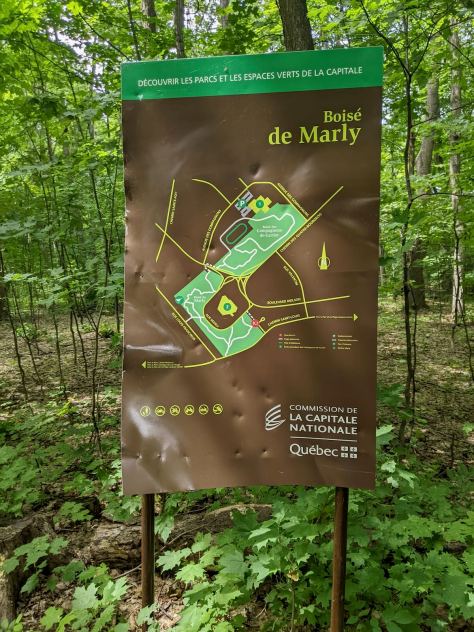 I’m very grateful to Canada for taking me a little outside my comfort zone in terms of park activations.
I’m very grateful to Canada for taking me a little outside my comfort zone in terms of park activations.
You see, by and large, I activate large national and state parks in rural areas of the US. I’m used to having lots of space and loads of activation site options. Even on a busy day, if I choose, I can pretty much disappear in some far-flung corner of a park. No one would ever know I’m there.
Urban parks are still rather novel to me.
On July 4, 2022, I plotted a little multiple park POTA run that included four urban parks all clustered in the Sainte-Foy region of Québec City.
The first park I activated that day was Parc de la Plage-Jacques-Cartier (VE-0970)–click here to check out my full field report and activation video. The second park was Parc Cartier-Roberval (VE-0964)–click here to check out that field report and activation video.
The third park I scheduled for the day was Boisé de Marly Provincial Park. I could find very little information about this park online and even Google Maps satellite view didn’t give me an idea of what to expect once I arrived.
I could tell, though, that it was an urban park nestled between neighborhoods, roads, and commercial buildings. I could also tell that it had trees, so I planned to use the same transceiver-antenna pairing I used at the previous park: the Elecraft KX2 and Tufteln 9:1 random wire antenna.
Boisé de Marly was basically across the road from Parc Cartier-Roberval, but I needed to find a pedestrian access point and a parking spot, so I drove around the southern perimeter of the park until I found a side road with an access point and what appeared to be free parking on the road.
In truth, I wasn’t entirely sure if I needed a permit to park on the street, but I felt it was likely okay based on lack of signage. In any case, the street was quiet and I parked with a couple of other cars. I hoped that if I was mistaken, the person planning to write me a parking ticket would see my North Carolina plates and the RAC sticker and decide to give me a break.
Besides, at this point I was on a tight schedule if I wished to hit all four scheduled parks that afternoon, so I didn’t plan to hang around long enough for a ticket anyway.
Boisé de Marly (VE-0956)
At the neighborhood street entrance, I found the sign above that gave me a quick overview of the park. From what I could tell, this park primarily consisted of a trail network meant for walking and running.
I didn’t see any signs of picnic tables or even benches, at least at this end of the park.
I walked into the park maybe 100 meters or so and looked for a spot to operate.
Continue reading An Urban POTA ATNO at Boisé de Marly Provincial Park





















































